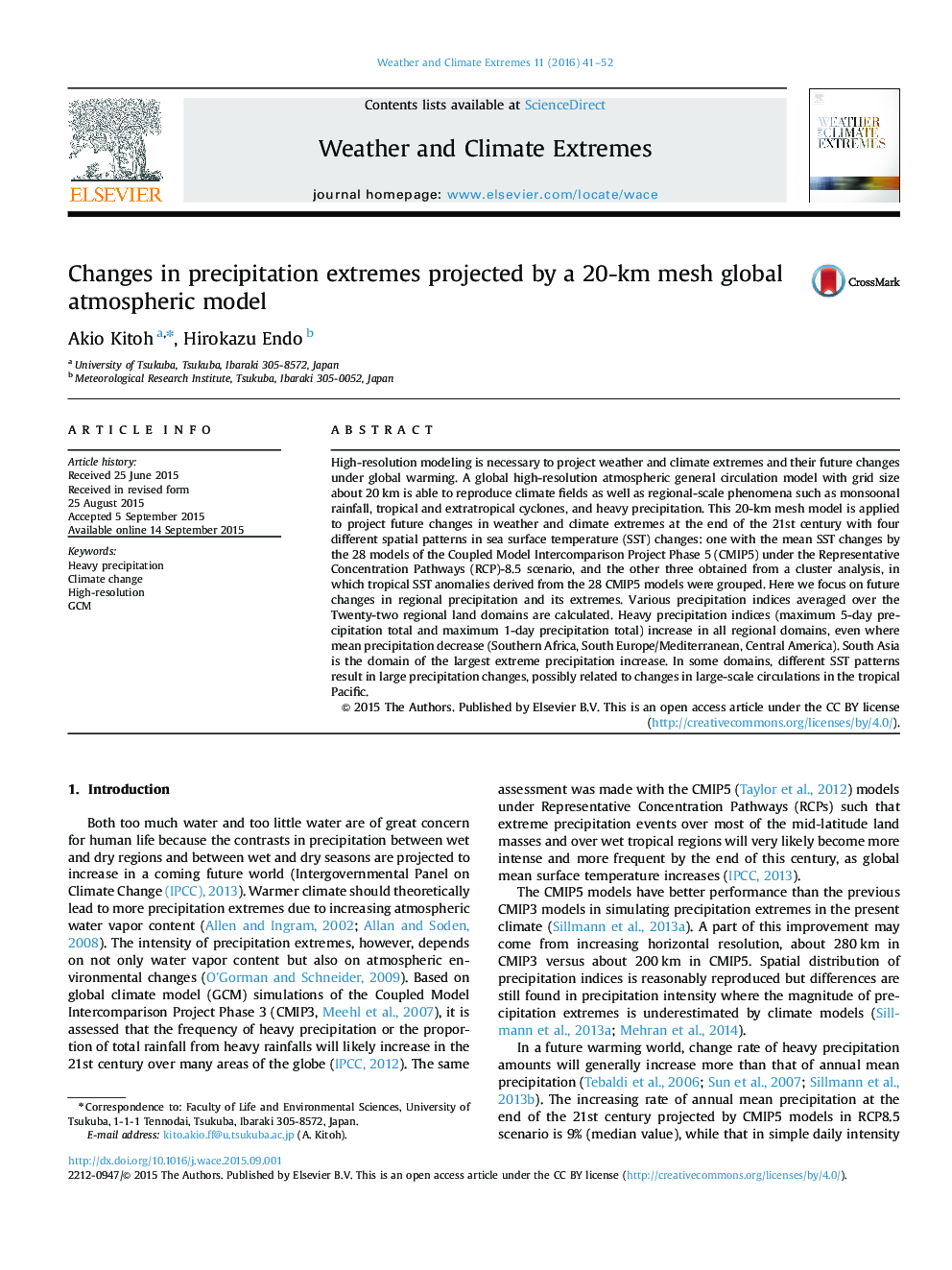| Article ID | Journal | Published Year | Pages | File Type |
|---|---|---|---|---|
| 1066658 | Weather and Climate Extremes | 2016 | 12 Pages |
High-resolution modeling is necessary to project weather and climate extremes and their future changes under global warming. A global high-resolution atmospheric general circulation model with grid size about 20 km is able to reproduce climate fields as well as regional-scale phenomena such as monsoonal rainfall, tropical and extratropical cyclones, and heavy precipitation. This 20-km mesh model is applied to project future changes in weather and climate extremes at the end of the 21st century with four different spatial patterns in sea surface temperature (SST) changes: one with the mean SST changes by the 28 models of the Coupled Model Intercomparison Project Phase 5 (CMIP5) under the Representative Concentration Pathways (RCP)-8.5 scenario, and the other three obtained from a cluster analysis, in which tropical SST anomalies derived from the 28 CMIP5 models were grouped. Here we focus on future changes in regional precipitation and its extremes. Various precipitation indices averaged over the Twenty-two regional land domains are calculated. Heavy precipitation indices (maximum 5-day precipitation total and maximum 1-day precipitation total) increase in all regional domains, even where mean precipitation decrease (Southern Africa, South Europe/Mediterranean, Central America). South Asia is the domain of the largest extreme precipitation increase. In some domains, different SST patterns result in large precipitation changes, possibly related to changes in large-scale circulations in the tropical Pacific.
